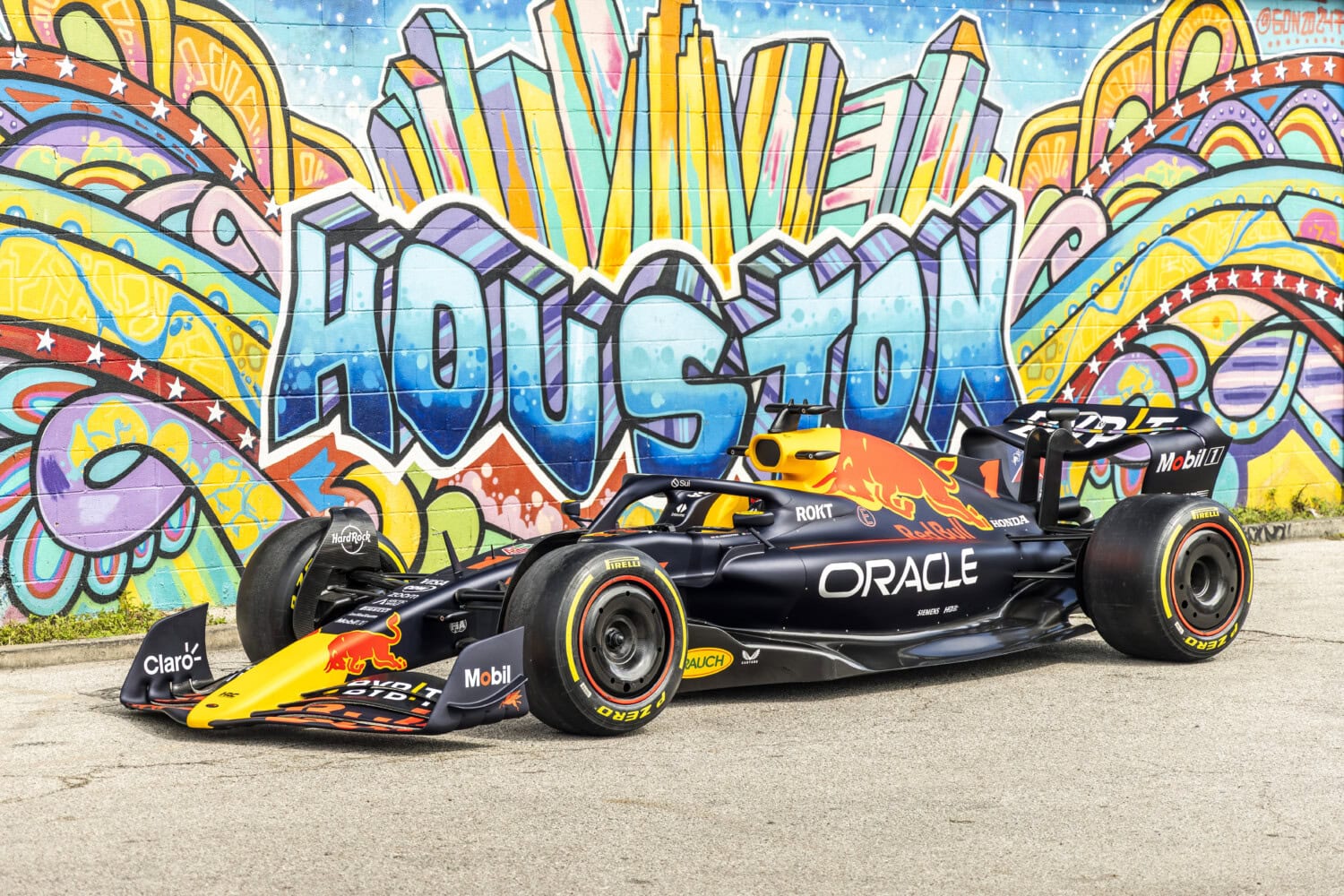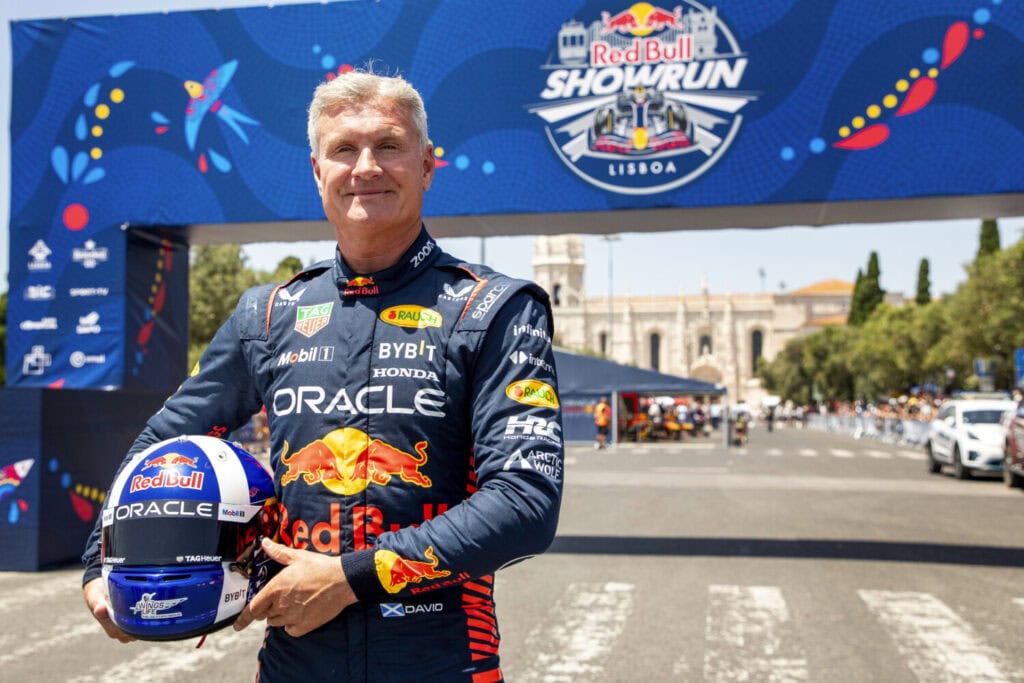Boardroom’s Michelai Graham ventured to Houston for a Red Bull Showrun event to see how the brand is fueling F1 fan engagement, integrating entertainment into its brand strategy, and using tech to advance the sport.
Oracle Red Bull Racing has solidified itself as a leader in Formula 1 through a combination of strategic investments, unprecedented driver talent, advanced technology, fan engagement spectacles, and innovative marketing.
The racing team often works off the track to expand F1 fan engagement worldwide. One of the most prominent examples of this is the Red Bull Showrun, a flagship event where F1 cars hit city streets for new and veteran fans to experience the excitement and spectacle of the sport up close. A Red Bull Showrun event features high-speed demonstrations, stunts, interactive activities with drivers, a paddock, a fan zone, and more.
Most recently, the Red Bull Showrun popped up in Houston, drawing over 35,000 attendees to Discovery Green Park. Red Bull Racing built a custom temporary track surrounding the park, where renowned F1 driver and 13-time Grand Prix winner David Coulthard and current Red Bull Junior Driver Arvid Lindblad took turns driving two championship-winning F1 cars through the streets. Coulthard drove the RB8 while Lindbald drove the Visa Cash App RB liveried car. The event marked 17-year-old Lindblad’s first time driving an F1 car publicly after recently competing in the 2024 FIA Formula 3 Championship.
“Having the opportunity to see the faces and bringing the cars up close and personal to the crowd…not even in Monaco could you really get that close to a Grand Prix car,” Coulthard told Boardroom in Houston. “When you’ve got the sound of the car, and you can feel the vibrations, it’s really such a raw expression of power and technology. That’s what’s always made Formula 1 so fascinating compared to other motorsports.”

Coulthard and Lindblad weren’t the only drivers pulling off donuts, burnouts, and wheelies at the Showrun in Houston; the event also included performances from ‘Mad’ Mike Whiddett, who drifted in a McLaren P1 Hypercar, off-road racing champion Andrew Carlson, and street freestyle motorcyclist Aaron Colton. Ford joined the action with demonstrations featuring the Mustang GT3s and the Pikes Peak-winning F-150 Lightning Supertrucks.
It wouldn’t be a true Houston spectacle without some historic Texas flare and familiar faces at the event. Paul Wall did a ride-along with Whiddett before hosting a music intermission with tunes from Houston’s DJ Mr Rogers and LA’s DJ Hed. The program also included a lowrider parade featuring local owners and a pop-up car parade from Cars and Coffee featuring luxury and custom vehicles.
As part of the Red Bull Showrun in Houston, the program introduced Red Bull Turn It Up, a worldwide DJ competition where DJ crews compete against each other during a live and public performance. DJ Mr Rogers and DJ Hed mentored DJ crews and put on a show at NOTO in Houston to conclude the weekend. There was a lot about the Showrun in Houston that was designed for that region, which is what makes these events so unique. They blend F1 with local vibes and communities to create new experiences.
Red Bull Racing is leading the charge in advancing F1 on and off the track. Boardroom spoke to Coulthard about how Red Bull Racing prioritizes entertainment and fan engagement and how this fits into the franchise’s broader brand strategy.
Red Bull Racing’s Entertainment Expansion
Coulthard is one of the longest-standing drivers in the Red Bull Showrun program and has been with Oracle Red Bull Racing since its inception 20 years ago. He travels the globe to participate in Showrun demonstrations and has seen the program evolve. There have been over 50 Red Bull Showrun events since the program began in the mid-2000s.

“It’s something that’s supposed to give back to the people, so it’s not a ticketed event,” Coulthard said. “It’s also normally free, which means people don’t have a reason not to go. Some people go there already fans, and some leave new fans, which is good.”
In the early stages of the Red Bull Showrun program, Coulthard said it was more about Red Bull creating F1 content moments around the world, which is still in the event series’ DNA today. He recalls the iconic moment when his team woke Dubai up at sunrise to the sound of an F1 car revving up. That initial goal grew into a fun and educational event series spread across regions that may not be traditional Red Bull Racing markets.
“Washington, DC, would be an example of that. It’s not a classic place you would expect to see a Formula 1 car. Still, we were up and down Pennsylvania Avenue, and it was packed with people that came out of curiosity or fandom,” Coulthard said about the Red Bull Show Run in DC earlier this year.
Formula 1 has been expanding and attracting new fans in recent years, and Red Bull has been at the forefront of engaging these new fans through events, social media, and partnerships. Showruns are part of Red Bull Racing’s broader strategy to tap into the rapidly growing Formula 1 fanbase.
A big part of Red Bull’s marketing plan is integrating F1 into its broader portfolio of extreme sports and lifestyle events, maintaining a solid and consistent brand identity. These events also help solidify Red Bull’s presence in traditional and growing F1 markets, such as in the US, where races like the Miami and Austin Grands Prix are becoming more prominent.
Coulthard said a handful of national and international Showruns are planned for the near future, though he couldn’t disclose exact locations just yet. Red Bull has already announced that the Minneapolis Showrun will take place on Sept. 14, and we can expect to see more from the program as it continues its quest to attract more F1 fandom.
Formula 1 and Tech
Coulthard spoke a bit about how much the technologies across F1 continue to progress as the sport grows. He said he often sees tech professionals make a career switch to work in the F1 industry because they can be a part of teams that are actively designing tech solutions and putting them on the track in a matter of weeks or months. Those are fast-paced results that tech professionals may not experience working in the tech world.
“It’s a very reactive and responsive industry where you need to constantly evolve,” he said. “In the end, it comes down to a couple of guys behind the wheel, but all of the tech around them is what serves them.”
The two most notable tech advancements that Coulthard noted are the rapid access to data and the use of simulator technologies during race preparations. Red Bull set up some racing simulators in the paddock and in the Fan Zone at the Showrun in Houston, where fans kept a steady line to try out the tech their favorite drivers use to train. These simulators might be the closest fans get to racing a real F1 car, though they are stationary and require drivers to focus on the steering and pedal controls.
When he got his start in F1, Coulthard said collecting data involved plugging a laptop in to download some limited parameters while the driver operated as the primary voice of the car. While the driver is the human element behind the wheel and the differentiator in races, the voice of the car has changed now.
“The voice of the car is the data in real-time, he said. “It’s as fast as modern technology allows it to be. We have teams of people looking at data to highlight issues and make suggestions that can be transmitted to the driver to enhance the performance of the car.”
Tech has changed so much, Coulthard said, going as far as saying many technologies today are “born on the racetrack” before being integrated across other industries.
As technology continues to push the boundaries of what’s possible on the track, it’s clear that the innovations used in F1 today could evolve by tomorrow.